Bruce Dowbiggin
When Russians Were Cool: How Detroit Brought Down The Wall
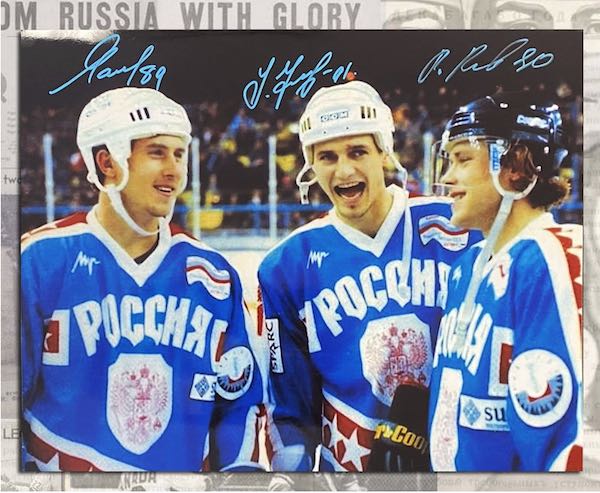
The Ukraine invasion has caused repercussions everywhere— even in hockey. The NHL, IIHF and the CHL have all responded in different ways to punish the aggression shown by Vladimir Putin. The CHL, in particular, has banned the drafting of Russians and Belorussians teenagers in this year’s bantam draft.
This overreach is all the rage with officials offended by Putin (the Metropolitan Opera fired one of its star soloists, Russian Anna Netrebko, for not condemning Putin enough). Not since the 1980s, when the dying USSR forbade the drifting on players into the NHL, has there been such distrust of Russians for political reasons.
In our new book Inexact Science, my son Evan and I recalled how the Detroit Red Wings, under chief scout Neil Smith, cracked the bias against Soviet (Russian) players in the historic 1989 draft as they poached a Hall of Fame defence man from Sweden and two Russian stars— Sergei Fedorov and Vladimir Konstantinov, in the middle rounds of that draft. And how it could have been much greater with a third Russian who got away.
“In 1986, Smith had been sent on a mission to find a full-time European scout for Detroit. Visiting Sweden, he encountered Christer Rockstrom. Smith was already somewhat acquainted with this scouting whiz, because Christer had been the cab driver who would take him to and from games he was scouting. Realizing he was dealing with a hardcore but perceptive fan who knew the players inside and out, Smith persuaded the Wings to give the Swede some scouting employment on a part-time basis, and then promoted him to the full-time European scout role a couple years after. It was a partnership that paid huge dividends.
The results of the organization’s new dedication to searching deeply into Europe was never more evident than with their third-rounder in the 1989 draft. That pick (number 53) may just be the best mid-round steal in NHL draft history. Rockstrom had put in tremendous diligence to find him, alerting his higher-ups to this thin, wiry kid playing for VIK Västerås HK of the Swedish Elitserien. A teenaged defenceman who had drawn into only 20 games in 1988–89 with just two assists to show for it, this player didn’t get much ice time when he actually did find his way into the lineup. Nonetheless, he happened to catch Rockstrom’s eye. That D-man was none other than Nicklas Lidstrom.
Fearing Lidstrom would be lost to them in the 1990 draft, when he’d be considered a first-round-worthy prospect, Detroit pounced a year in advance. Rockstrom convinced the Wings brass to use their last possible chance to grab Lidstrom—a potential gem who he believed would turn into a top pairing defender. Wary that someone could spill the beans to other teams, only four members of the organization—Devellano, Smith, Holland and Rockstrom—knew the secret until the day of his selection.
It worked like a charm. Lidstrom was still available come round three and was taken by the Wings—to the confusion of many in attendance. Even the NHL’s Central Scouting Bureau had very little info on what was considered quite an off-the-board choice (or “project,” as it’s often dubbed today).
As the league scrambled to figure out the Lidstrom pick on the draft floor in Minnesota, the Wings were thinking even further to the east for other delightful discoveries. Once the spring of 1989 rolled around, Soviet authorities had finally begun actively marketing some of their established stars to interested buyers in North America… it was still believed that the Soviets would want to hang on to their elite younger talent for several years to come. This mindset warded off many teams from wanting to “waste” a pick on such an arduous scenario. The Wings were not so easily scared in 1989. Having already passed on grabbing Sergei Fedorov when they had the chance in 1988, they used their fourth-round pick, number 74 overall, to select him the following year.
Devellano certainly wasn’t planning to miss out on Fedorov on this particular occasion. As he told NHL.com in 2015, “My thinking was, ‘Let’s call a spade a spade; how many fourth-round picks who are North American make it big?’ Very few… So what I said to myself was, ‘This is the best 19-year-old in the world, and I’m going to pass on him (again) to probably take a minor-league player?’ Forget about that, he’s coming on the Red Wings’ list, and we’ll worry about it in the future.” A star centre with Moscow CSKA, Fedorov internationally and domestically was featured as the playmaking, defensively responsible force on a line with fellow teenaged phenoms Alexander Mogilny and Pavel Bure—a ridiculously potent grouping that was the equivalent of a 2004 Russian squad icing a line with Evgeni Malkin between Alex Ovechkin and Ilya Kovalchuk.
Mogilny himself had been secured by the Sabres with the 89th overall pick a year earlier, but scouts were salivating that perhaps Bure or Fedorov could be available the next year as well. Fedorov had even been offered the chance to jump ship with Mogilny earlier. Before becoming the first Soviet player to successfully defect, Mogilny revealed his intentions to close friend Fedorov in a Stockholm hotel room they shared. Fedorov rejected the offer to join him, however, figuring it was a lark, prank or some sort of joke that was never supposed to be acted upon. But within 48 hours of the chat, Mogilny bolted the premises in an elaborate escape where he gained contact with the Sabres and the parties enacted a covert flight plan into the USA. While Fedorov stayed put for the meantime, the Wings were undeterred in taking him, even if it made the Soviet authorities keep even stricter surveillance on their prized pupils.
At his team’s drafting table that day (in 1989), Devellano reportedly promised Smith that they could go after at least one more Russian before the day was over. That next one ended up being Fedorov, who many whispered might just have been the best on that line because of his uncanny ability to handle the duties of a two-way centre while the explosive Mogilny and Bure were freed up to earn the glory of scoring most of the goals. Devellano would make his reasoning clear down the road by stating, “As was the case with Petr Klima, my strategy was simple. We would draft the best players, and if they happened to be behind the Iron Curtain, we would use our ownership resources to find a way to get them out.” Such boldness confirms the theory that quality ownership is perhaps the most important element in forging a perennially successful sports club.
Indeed, the Ilitches—who also own the Detroit Tigers—were the polar opposite of what Wings ownership had been under Bruce Norris. Their willingness to use their big dollars, trust their personnel and treat their employees with a degree of loyalty and compassion certainly gave the franchise some incredible mileage in their eventual reign as the model NHL organization from the mid-1990s to the early 2010s. The drafting wizardry of 1989 didn’t necessarily begin and end with the Wings, though. And it could’ve been even richer. While Wings personnel in later years claimed they were ready to grab Fedorov’s linemate Bure with their sixth-round pick and deal with any questions of his eligibility later, they never got the chance to add him. Another team’s plans got in the way.
Detroit’s management group had apparently mused about grabbing Bure in the fifth round after already having secured Fedorov. As Holland told the Toronto Star’s Bob McKenzie in 1995:
We (were) at the draft table and Christer tells Neil “Now we should take Bure”… Neil said he didn’t think Bure had played enough games to be eligible. So Neil goes and checks with (NHL vice-president) Gil Stein, and Stein tells Neil that Bure has only played seven games and it has to be eleven (sanctioned games) to be an eligible pick. Neil comes back and tells us that, and Christer says “No, that’s not right. He played eleven. I know he played eleven.” Neil goes back to Stein and tells him our European scout said Bure should be eligible.
Stein still said no. The NHL’s records showed just five games played in 1987–88—figures Rockstrom believed were erroneous. So Neil comes back to the table and it’s coming to our turn. We didn’t think Bure was eligible, so we took someone else (Shawn McCosh)… Finally, Neil said we were going to take Bure with our next pick no matter what and let the league settle the eligibility thing later. We were just about to pick him when the Canucks announced his name.

It was Canucks GM Pat Quinn who swooped in on Bure during that sixth round (overruling his second-in-command, Brian Burke, who at the time thought Bure was too small for the big leagues of North America). Thankfully for the Canucks, their head scout, Mike Penny, agreed with Rockstrom’s assertion that Bure had made the required number of appearances and convinced his boss to turn in the card with Bure’s name on it. With whispers that the Oilers were looking to nab him too, the Canucks stepped up to make “The Russian Rocket” their own at number 113, and did so only three spots ahead of where the Wings ultimately took Dallas Drake—perhaps Detroit’s most successful North American pick that year, but a far cry from a future Hall of Famer like Bure.
As consolation the Red Wing later nabbed Vladimir Konstantinov in the seventh round. To put the finishing touches on their 1997-98 Stanley Cups they added USSR stars Igor Larionov, Sacha Fetisov and Slava Kozlov. The NHL— and Don Cherry— was never the same after the triumph of the Russian Five
Bruce Dowbiggin @dowbboy is the editor of Not The Public Broadcaster (http://www.notthepublicbroadcaster.com). The best-selling author was nominated for the BBN Business Book award of 2020 for Personal Account with Tony Comper. A two-time winner of the Gemini Award as Canada’s top television sports broadcaster, he’s also a regular contributor to Sirius XM Canada Talks Ch. 167. His new book with his son Evan Inexact Science: The Six Most Compelling Draft Years In NHL History is now available on http://brucedowbigginbooks.ca/book-personalaccount.aspx

Bruce Dowbiggin
Get Ready: Your House May Not Be Yours Much Longer
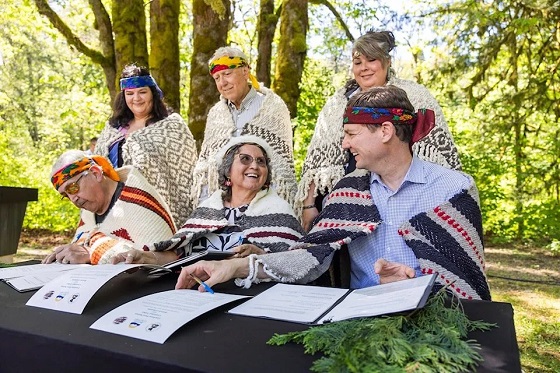
As political scientist Philip Kaufman explains, “If you keep saying you are on stolen land, don’t be surprised when judges give it away to the natives you said you stole it from.”
“At Dodger Stadium on Monday night, singer JP Saxe re-wrote the lyrics of O Canada. The Toronto pop singer swapped the official “our home and native land” for “our home on native land.”
All things considered the land acknowledgement by Saxe (born Jonathan Percy Starker) is pretty tame stuff in today’s climate where some Canadians are suddenly learning they may not own their homes. But like Justin Trudeau washing “genocidal” Canadian laundry at the UN Saxe’s stunt at the Series is just another sign that Canada’s clever folk remain all-in on humiliating themselves in front of the world over reconciliation.
The latest acknowledgements go beyond an off-key pop singer toying with a song lyric. Just ask citizens of Richmond, B.C. which has sent a letter to residents warning that their property may not belong to them. This after a B.C. Supreme Court judge ruled the Vancouver Island First Nation have won back fishing rights and title for part of the land its ancestors used as a summer home in British Columbia’s Lower Mainland— despite opposition by two other Indigenous communities.
The gormless BC NDP government, which brought on the crisis by refusing to legally challenge native demands in the Blueberry River dispute, says it’s monitoring the Richmond file, admitting “owning private property with clear title is key to borrowing for a mortgage, economic certainty, and the real estate market.” But no promises, folks.
Naturally the locals are not amused. One Richmond property owner, who says he’s owned and paid taxes on his home since 1975, has been told by his lender they won’t be renewing his mortgage after First Nations land claim.

The Eby government settlement— called by Bruce Pardy “an existential threat to the future of his own province”— is part of a wave of claims both written and oral gaining momentum across the nation. As we wrote in August, “Among those properties in question is the Vancouver International Airport in Richmond, B.C.. How slick is that? A Carney government that ran on protecting Boomers’ primary residence cashboxes has now managed to put the entire notion of fee simple home ownership at risk.
As blogger Liam Harlow writes, “Indigenous people will now have an unprecedented, parallel title to private property in that area, a legal first of its kind in a court declaration. This title is declared a ‘prior and senior right to land,’ implying a stronger claim, with the court fundamentally asking “what remains of fee simple title after Aboriginal title is recognized in the same lands?”
It doesn’t stop there. Under UNDRIP (United Nations Declaration on the Rights of Indigenous Peoples) the UN will hold any properties acquired “in trust” for all “aboriginals” as they bicker among themselves for supremacy. Whether Canada’s natives will actually get the land, they will have served as a convenient vehicle for the progressive Left to expand its jurisdiction.
The glass half full on reconciliation holds that Canada’s politicians negotiate a fee with the new native owners to stay on these properties. (Good luck getting a mortgage with the Haida Gwai as co-owners on title.) The glass half empty is your equity goes bye-bye. The decision shocked many earnest Elbows Up types who had no idea their elected governments had fumbled the ball this way.

This is the culmination of decades of federal Liberal acquiescence on the Indigenous file, incompetence highlighted by Trudeau’s pandering visit to a graveyard that contained no alleged murdered babies. Or his refusal to re-open the main rail lines in 2020 when natives blocked the CP tracks.”
Citizens losing their homes in legal disputes should lead every newscast in the nation. Good luck sparking debate on these onrushing crises. As members of the B.C. legislature discovered when they were fired by their party for articulating a few inconvenient facts on reconciliation. The paid-off media, meanwhile, are too obsessed with Trudeau dating celebrity Katy Perry.
The reconciliation fatwa imposed by the Canadian Left powers the ludicrous ongoing spectacle over the Rez School graves. Based on verbal tradition alone, the prime minister of Canada staged pictures with teddy bears when there has never been a murder charge or a family searching for a dead child ever registered in Canada.
Multi-million dollar payouts by the Canadian government to investigate graves produced no evidence of any bodies— mostly because no effort was made. Evidence shows that children in Rez schools might have had a lower mortality rate from TB than those children in their residences. Or even in the general public.
Anyone challenging this reconciliation orthodoxy is fired from teaching positions, expelled from mainline political parties and banned from polite society. No one in Laurentian media seems willing to touch the hot skillet. No wonder polling in 2024 showed 60 percent of Canadians still believe the genocide claim.
Using this blank cheque indigenous radicals demanded land acknowledgements before meetings, political rallies and sports events. To which Woke Canada has caved. A bill in the BC legislature to ban acknowledgements “that deny the sovereignty of the Crown within British Columbia or that attribute collective guilt to individuals based on race, ancestry or the actions of Canadian historical figures” was quashed (88 of 93 MLAs voting no) The MLA behind the bill, Dallas Brodie, was instructed by a fellow PC MLA to get on the “right side of history.”
Meanwhile activists are in classrooms repeating the sanctity of land acknowledgements, ignoring that these lands had turned over many times in tribal warfare. To take just one example, the Comanche used the horse to go from a Canadian tribe to conquering multiple tribes and civilizations across the continent, stealing land and enslaving women and children. But new history mandates that it was their “ancestral” land. The pattern is repeated across North America.
Canadian liberals shrug at this as all just words and theatre. But as political scientist Philip Kaufman explains, “If you keep saying you are on stolen land, don’t be surprised when judges give it away to the natives you said you stole it from.” The BC NDP government’s guilt trip is now producing land claims across the country with warning home owners that, guess what, you may not own your home, either. Like this aboriginal challenge over lands in western Quebec.
There may be better ways to inspire radicalism among normally placid Canadians than kicking people out of homes they’ve bought, but for the moment we can’t think of any. And that’s nothing to sing about.
Bruce Dowbiggin @dowbboy is the editor of Not The Public Broadcaster A two-time winner of the Gemini Award as Canada’s top television sports broadcaster, his new book Deal With It: The Trades That Stunned The NHL And Changed hockey is now available on Amazon. Inexact Science: The Six Most Compelling Draft Years In NHL History, his previous book with his son Evan, was voted the seventh-best professional hockey book of all time by bookauthority.org . His 2004 book Money Players was voted sixth best on the same list, and is available via brucedowbigginbooks.ca.
Bruce Dowbiggin
Is Roundball A Square Game? Sports Betting Takes Another Hit

The most-heard response to last week’s FBI arrests of NBA stars in a gambling sting was “Why do athletes earning millions need to win thousands betting spots?” Coming on the heels of the apparent Shohei Ohtani coverup— his translator took the fall—it also begs the question just how legitimate are the games on which the public bets? Especially with pro sports now partnering with legalized gambling outfits.
There have long been stories of the high-stakes poker and golf games played by Michael Jordan, Charles Barkley and other mega sports celebrities. There was the shocking scandal of former NBA referee Tim Donaghy fixing games for gamblers. Hockey fans remember the tawdry 2006 episode of Wayne Gretzky letting his wife take the fall for betting debts with former NHL star Rick Tocchet.
Now this. NBA Hall of Fame member Chuancy Billups, the suspended coach of the Portland Traiblazers, and Terry Rozier of Miami Heat were the eye candy in the arrest, but the problems go much deeper. If you listen to people like former mob guy Mike Franzese, who now is a security consultant, the reality is not The Sopranos method of busting limbs and shooting deadbeats. It’s more subtle.
According to Franzese the biggest fear for those caught in the web of underworld gambling is exposure of their mistakes. They will do anything to avoid these problems becoming known to their families, their friends and, most of all, their employers. They think the best way to avoid exposure is to play along with mobsters, become a small pawn in crooked betting and poker rings. As if.
So how do they get caught up in there first place? As Franzese explains, “The competition they have on the field spills over into the dressing room, where athletes on the same team often compete with each other in what they think is innocent betting on other sports.” In short they feel like big shots in Guys and Dolls tossing around dice. No one will ever get caught. Pretty soon, these naïve young men are racking up debts in the tens and even hundreds of thousands.
Because they can’t go the bank to finance their debts they end up looking for money on the streets from bookmakers connected to the mob. (It’s why the underworld knew long before the news went public about the bets coming via Ohtani’s translator) And that’s where they get hooked.
The people holding their debt are happy to let their marks get even deeper in debt, so as to have a better grip on them. While the mob guys threaten violence, what they want most is a conduit to the action. So, in the case of Rozier or former Raptor Jontay Porter, they’re asked to shave points on the proposition bets offered on their production. In the case of Billups, they’re asked to front corrupt poker games with whales (big bettors) lured by the promise of celebrities at the table.
Whatever the hook, they hope they can quickly escape the trap, but soon they discover they’re captives till they are of no use in fixing results of drawing big card players. Because they’re often panicked or broke from a divorce or bad investment they try to make the money back quickly. For the reason that even a 60 percent winning percentage is considered high, repeat winners in the 80-90 percent range tip off authorities. Betting pros know not to be conspicuous but to accept a medium return over a long term. But Billups fleecing guys for big stakes in poker is not inconspicuous.
Most often they face the option of going bankrupt or turning evidence to the Feds to escape. Neither is an acceptable fate for someone who, until their habit tripped them up, was considered heroes and role models.

So how straight are the games that people trust for honesty? Especially now that legalized gambling has expanded the pool of bettors incrementally. With everyone looking for an edge or a secret source it’s a temptation trap. The pro sports leagues have security departments always win the lookout for suspicious behaviour, but they are loathe to expose those athletes who have gotten into the trap.
The leagues are also their own worst advocates. Even though Tocchet admitted to the 2006 gambling allegations the NHL has seen fit to let him coach in modern-day NHL. Gretzky turned in his innocence card when MGM needed a front man for its sports betting operation.

Current Tigers manager A.J. Hinch was the manager of the wining Houston Astros when they cheated in the 2022 World Series. And Ohtani continues to star with the Dodgers, despite leaving his gambling-addicted translator in the dressing room of the California/ L.A. Angels for almost five years to soak up the kind of info the mob craves.
Likewise the casinos and betting sites want no exposure from reckless gamblers. Combined with the addictive appeal of betting to the players and fans, the problems are not likely to diminish. As a famous robber once said when asked why he robbed banks, “Because that’s where the money is.”
Bruce Dowbiggin @dowbboy is the editor of Not The Public Broadcaster A two-time winner of the Gemini Award as Canada’s top television sports broadcaster, his new book Deal With It: The Trades That Stunned The NHL And Changed hockey is now available on Amazon. Inexact Science: The Six Most Compelling Draft Years In NHL History, his previous book with his son Evan, was voted the seventh-best professional hockey book of all time by bookauthority.org . His 2004 book Money Players was voted sixth best on the same list, and is available via brucedowbigginbooks.ca.
-

 Alberta6 hours ago
Alberta6 hours agoFrom Underdog to Top Broodmare
-

 International17 hours ago
International17 hours agoPrince Andrew banished from the British monarchy
-
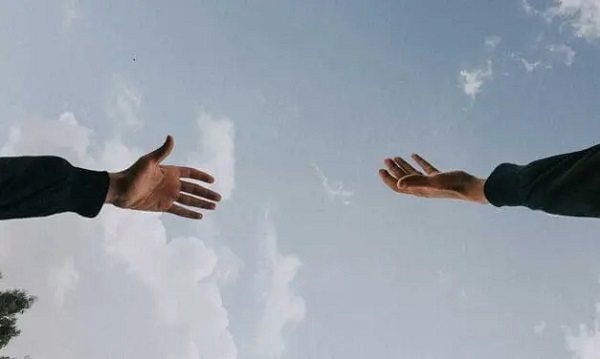
 Business1 day ago
Business1 day agoCanada’s attack on religious charities makes no fiscal sense
-
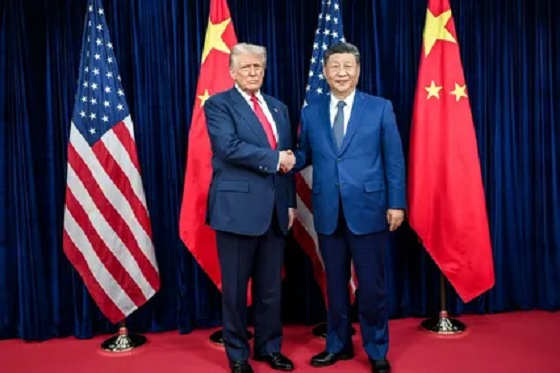
 Business16 hours ago
Business16 hours ago“We have a deal”: Trump, Xi strike breakthrough on trade and fentanyl
-
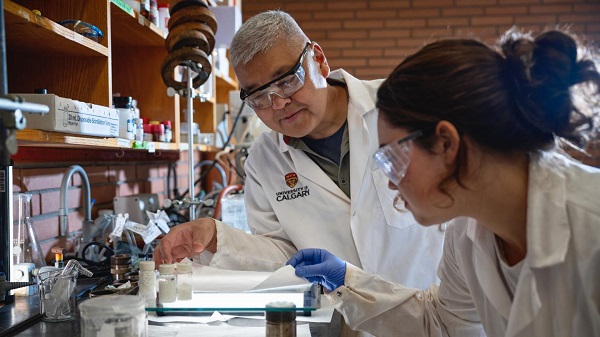
 Alberta2 days ago
Alberta2 days agoNobel Prize nods to Alberta innovation in carbon capture
-

 Bruce Dowbiggin1 day ago
Bruce Dowbiggin1 day agoGet Ready: Your House May Not Be Yours Much Longer
-
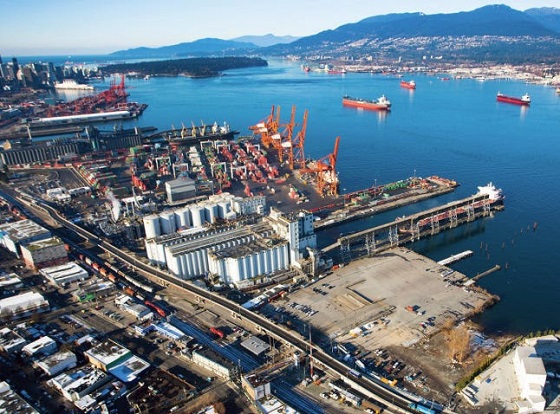
 Crime16 hours ago
Crime16 hours agoCanada Seizes 4,300 Litres of Chinese Drug Precursors Amid Trump’s Tariff Pressure Over Fentanyl Flows
-
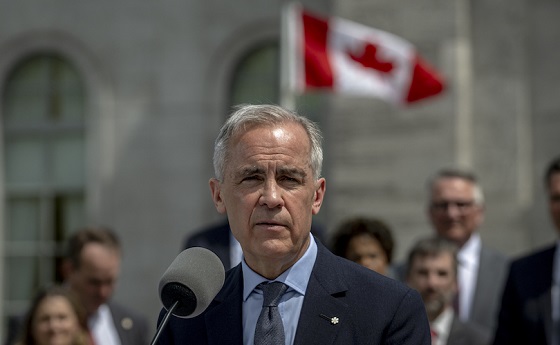
 National2 days ago
National2 days agoCanadian MPs order ethics investigation into Mark Carney’s corporate interests









